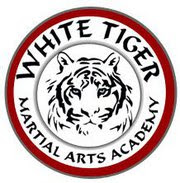The two styles of Ninpo Taijutsu that exist, the Bujinkan and the Genbukan, draw their methods from the 9 existing Ninja ryu, which we have listed elsewhere.
They form a "book" called the Ten Chi Nin Ryaku No Maki, which means the Book of ...Heaven, Earth and Man.
The first part, the core of modern Ninja training, is taken from the Book of Heaven, itself based on the core syllabus of the Gyokko Ryu.
There are two main training methods or "kata":
the Sanshin no kata - set of five waza,
the Kihon Happo - set of 8 techniques - 3 striking and 3 grappling.
Here we start our practice a modified interpretation of Kihon Happo based on both the sanshin kata and the koshi kihon sanpo, the 3 striking waza of the gyokko ryu.
These are defences and responses against 4 jodan attacks, then 4 gedan attacks.
They form a "book" called the Ten Chi Nin Ryaku No Maki, which means the Book of ...Heaven, Earth and Man.
The first part, the core of modern Ninja training, is taken from the Book of Heaven, itself based on the core syllabus of the Gyokko Ryu.
There are two main training methods or "kata":
the Sanshin no kata - set of five waza,
the Kihon Happo - set of 8 techniques - 3 striking and 3 grappling.
Here we start our practice a modified interpretation of Kihon Happo based on both the sanshin kata and the koshi kihon sanpo, the 3 striking waza of the gyokko ryu.
These are defences and responses against 4 jodan attacks, then 4 gedan attacks.
We then practice the 5 grappling responses to a collar grab called the torite kihon goho. They consist of 3 wristlocks, an elbow lock, and a throw. They are the basics for ninja grappling defences.
Another way to categorise Taijutsu is to seperate it into it's 3 major skills:
taihenjutsu - body movement
dakentaijutsu - striking - kempo
jutaijutsu - grappling - jujutsu, chin na
kobudo, weapons, is done with
body movement, the same stances and footwork
striking, including cutting for blades
grappling, lox and chokes with stix

